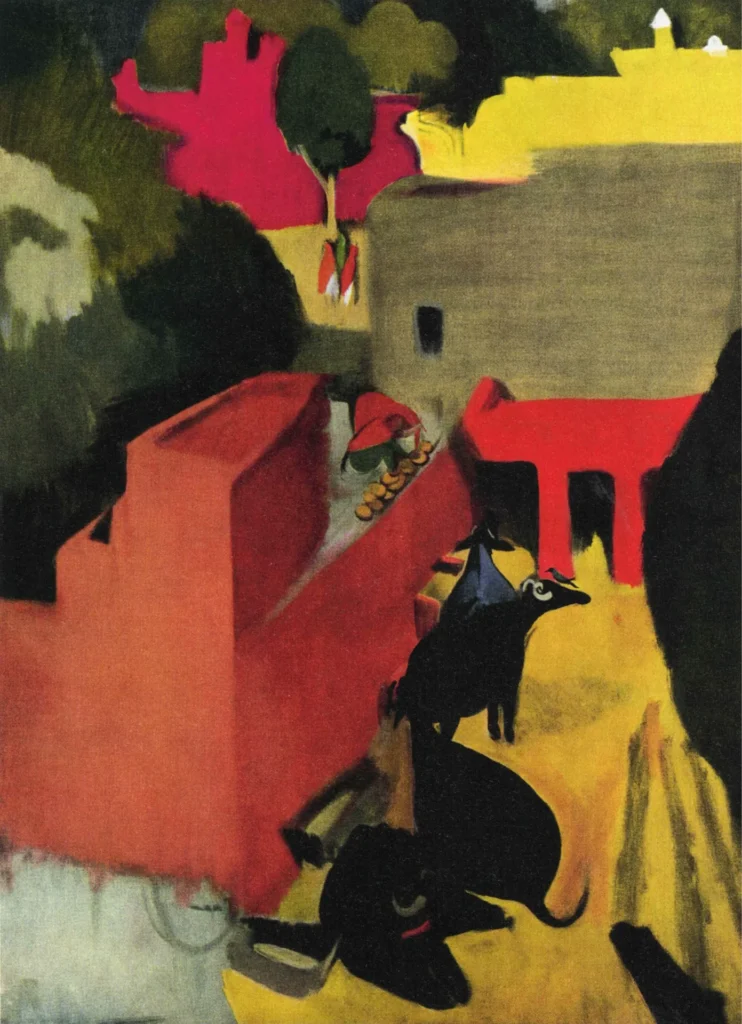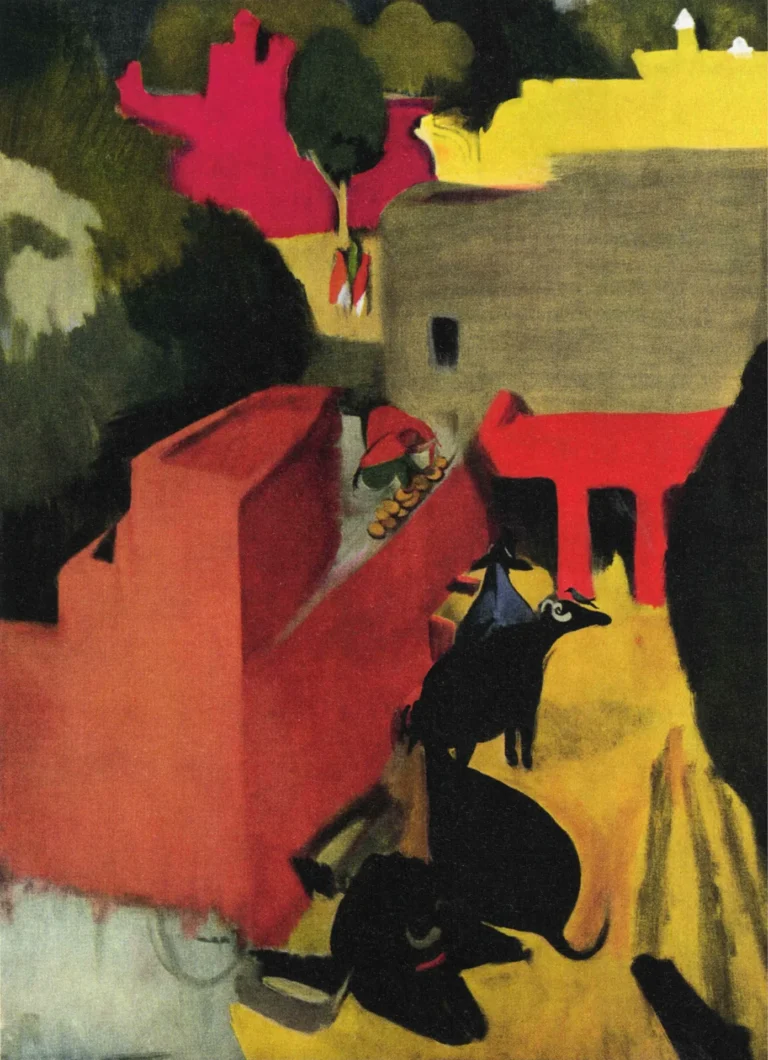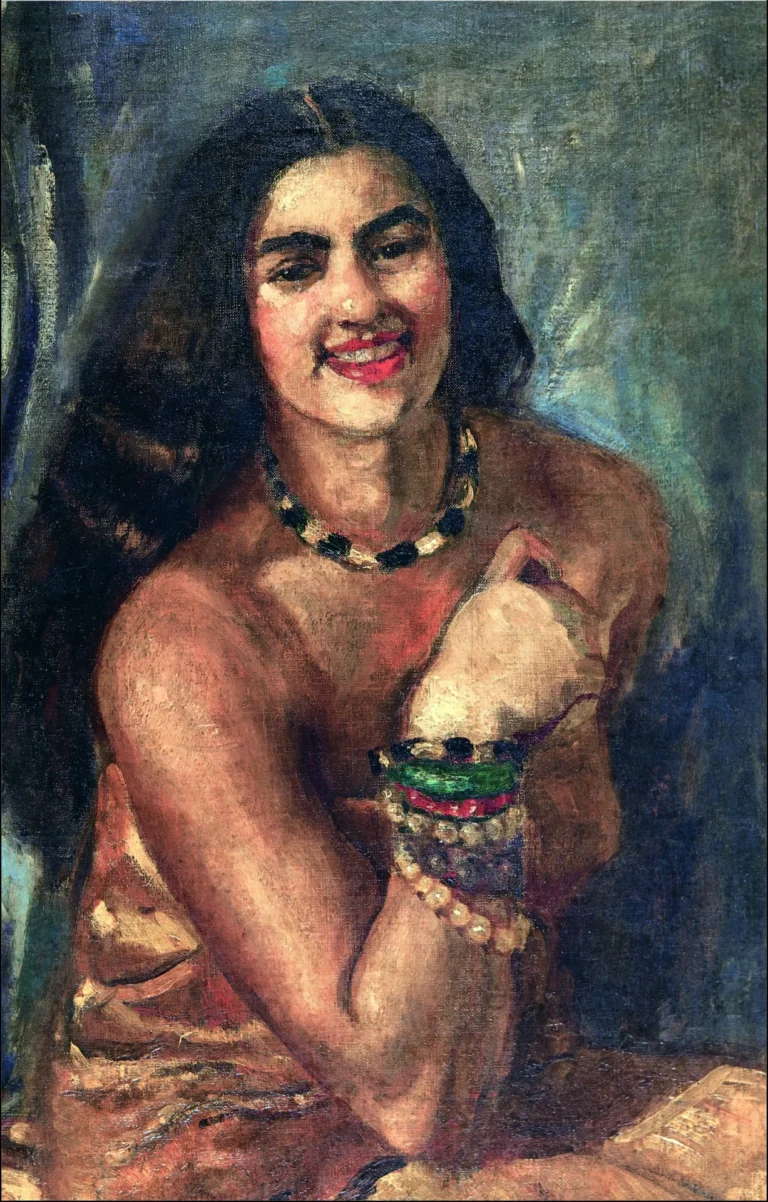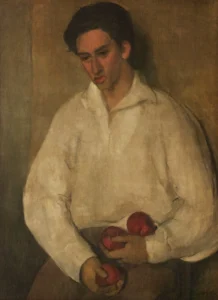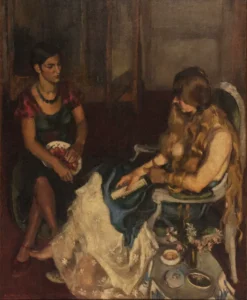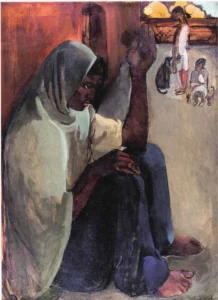The Last Unfinished Painting (1941)
Amrita Sher-Gil's The Last Unfinished Painting, created in 1941, showcases her unique blend of European and Indian artistic influences. Featuring an urban landscape populated by cows and subtly depicted figures, the painting employs a dark palette to capture depth and emotion. With influences from Cézanne and Gauguin, this work reflects Sher-Gil's dual heritage and encapsulates her artistic evolution. Despite its incomplete nature, it remains a testament to her pioneering role in modern Indian art.
Year 1941
About the Artwork
Did You Know
Liked what you see? Add it to your collection.
Enjoyed reading? Share it.
... continued
The Last Unfinished Painting
created by Amrita Sher-Gil in 1941, is a significant and enigmatic work that reflects the artist's unique blend of European and Indian influences. Here are some key points about this painting:
Composition and Style
The painting features a urban landscape with elements such as architecture, animals, and vegetation. It is characterized by a darkened palette with dominant colors of red, brown, and yellow, which create a sense of depth and light and shadow through flat panels of color. The scene includes four cows in an alleyway, their bodies melded together without clear perspective or definition. There are also barely perceptible figures in the background, wearing orange cloaks and white skirts, which blend into the brown background.
Influence and Technique
The technique used in this painting shows a strong resemblance to the works of Paul Cézanne, particularly his later quarry paintings. The palette, however, is more akin to Paul Gauguin's post-impressionist style, reflecting the earthy colors Sher-Gil encountered in India. The painting adopts a new style of expression, combining different elements in a unique use of the picture space, which was a departure from her earlier naturalistic portraits.
Context and Significance
This painting was created in Lahore, just before Sher-Gil's sudden death on December 5, 1941, at the age of 28. It was intended to be part of her first major solo exhibition in Lahore, which was held posthumously. The work is seen as a marker for an important breakthrough in Sher-Gil's artistic development, blending the feudal world she knew with the vibrant, cosmopolitan culture of Lahore. It reflects her ability to capture the essence of Indian life while being influenced by her European upbringing.
Emotional and Psychological Depth
The painting is overloaded with significance, reflecting the dual aspects of Sher-Gil's personality—her Western and Eastern roots. It captures the physical and emotional longing of the women depicted, as well as the cyclical rhythms of life in an urban Indian setting.
Legacy
Despite its unfinished state, The Last Unfinished Painting is considered a pivotal work in Sher-Gil's oeuvre, highlighting her innovative approach and her role as a pioneer in modern Indian art. The painting is now part of the collection at the National Gallery of Modern Art in New Delhi.




